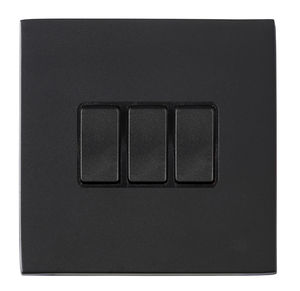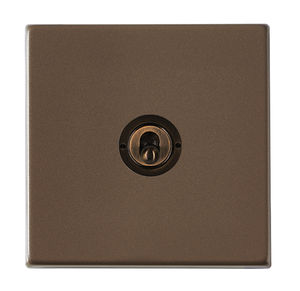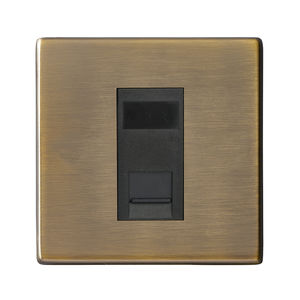
Interrupteur bouton poussoir Hartland G2encastrédoubleen métal
Ajouter à mes favoris
Ajouter au comparateur
Caractéristiques
- Type
- bouton poussoir
- Pose
- encastré
- Configuration
- double
- Matériau
- en métal
- Style
- contemporain
- Forme
- carré, rectangulaire
- Disponibilité couleur
- blanc, noir, gris, marron
- Finition
- aspect métal, aspect doré, aspect argenté, aspect chrome, finition mat, aspect bois
- Autres caractéristiques
- avec prise de courant, avec plaque personnalisée, à témoin
Description
Mince et élégant avec ses bords arrondis, Hartland G2 sans vis est une alternative abordable à la populaire boîte de fixation Hartland - même qualité Hartland, nouvelle plaque frontale à emboîter, disponible en onze finitions très tendance
- NOUVEAU Finition Anthra Gray disponible dès maintenant !
- Une alternative sans vis au Box-Fix
- Maintenant disponible dans onze finitions tendance
- Inserts : Blanc, Noir et NOUVEAU Gris Quartz
- Double USB 2,4A ultra-rapide (4,8A au total) en standard Type A et Type C
- Options Grid et EuroFix disponibles
- Fit & Forget : garantie de 25 ans
---
Catalogues
Recherches associées
- Interrupteur
- Interrupteur contemporain
- Interrupteur encastré
- Prise
- Prise de style contemporain
- Interrupteur carré
- Prise électrique
- Interrupteur en métal
- Prise murale
- Prise multi
- Interrupteur à bouton poussoir
- Prise à encastrer
- Prise multimédia
- Prise noire
- Prise en métal
- Prise blanche
- Interrupteur blanc
- Interrupteur double
- Interrupteur noir
- Interrupteur professionnel
* Les prix s'entendent hors taxe, hors frais de livraison, hors droits de douane, et ne comprennent pas l'ensemble des coûts supplémentaires liés aux options d'installation ou de mise en service. Les prix sont donnés à titre indicatif et peuvent évoluer en fonction des pays, des cours des matières premières et des taux de change.











